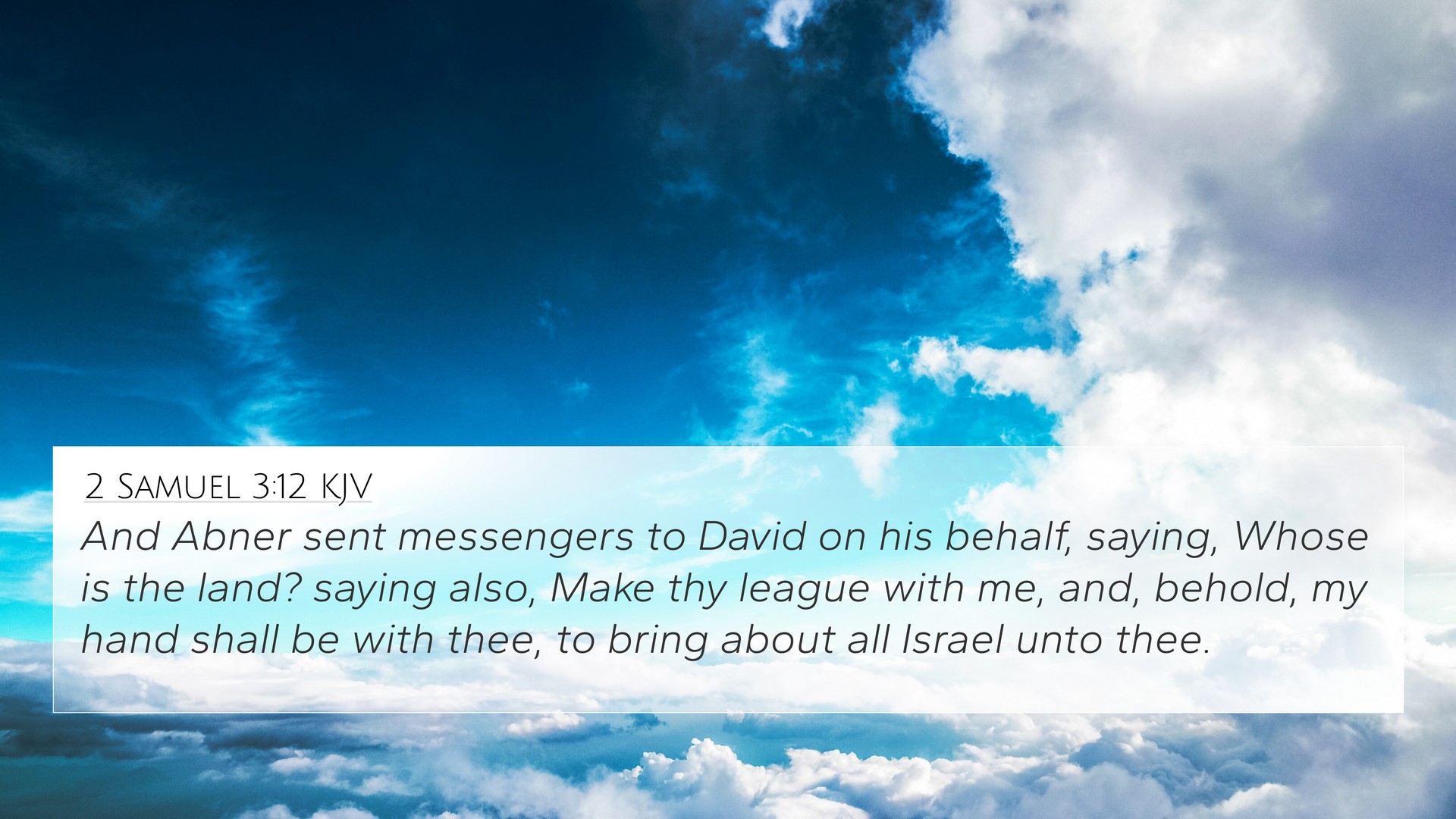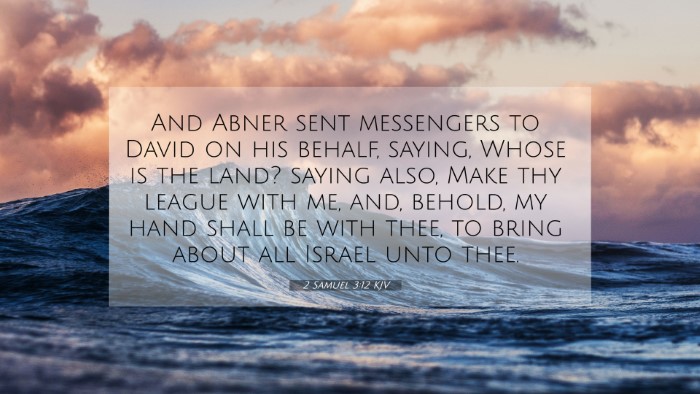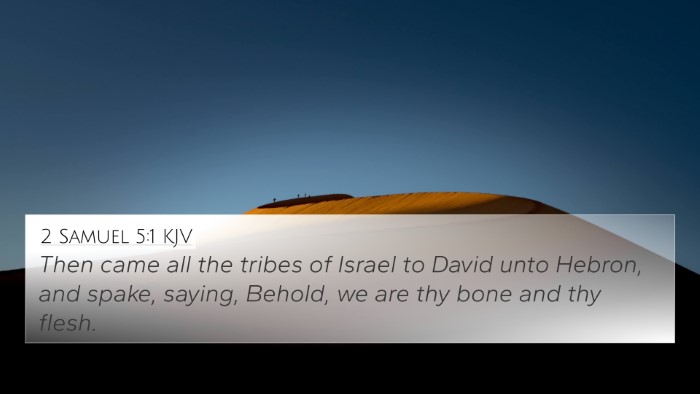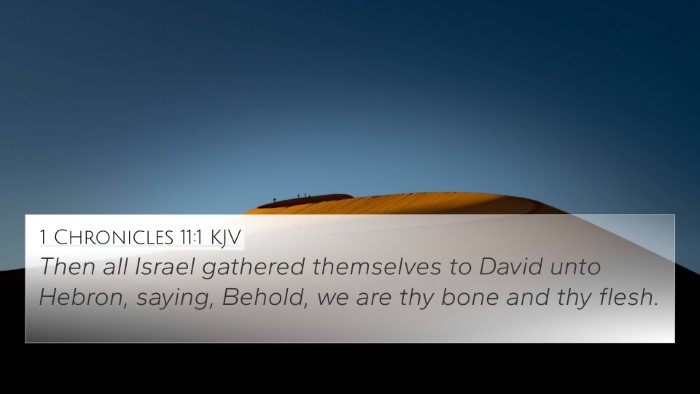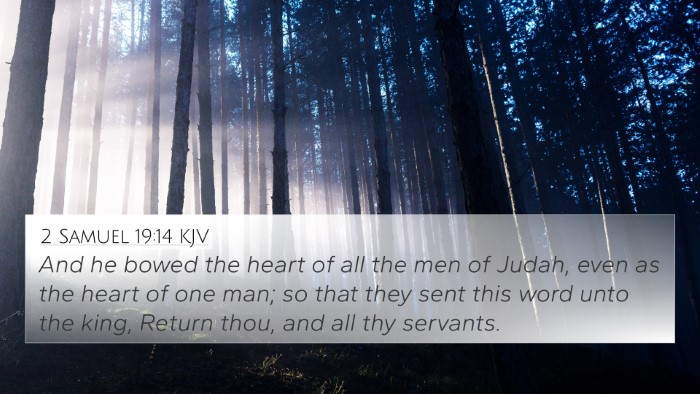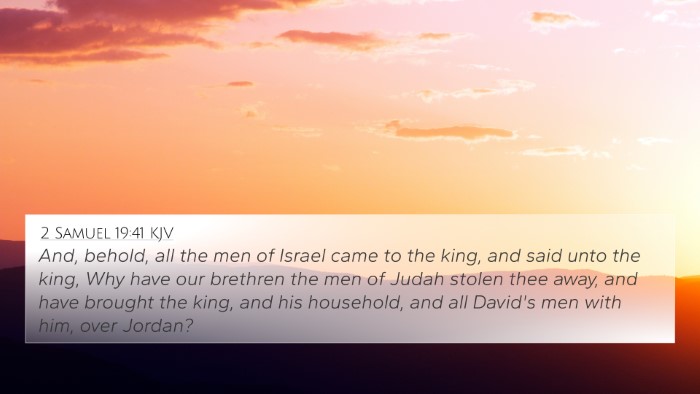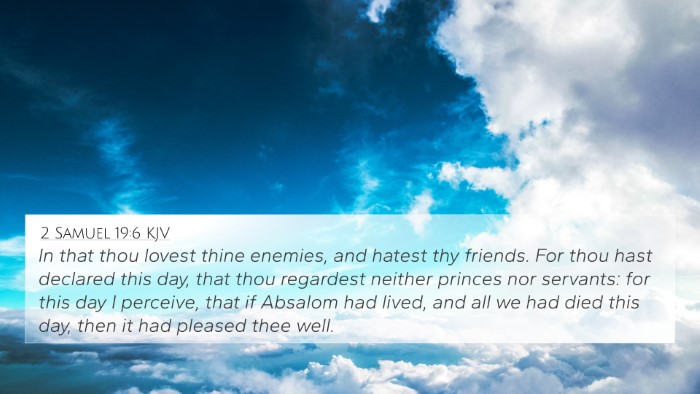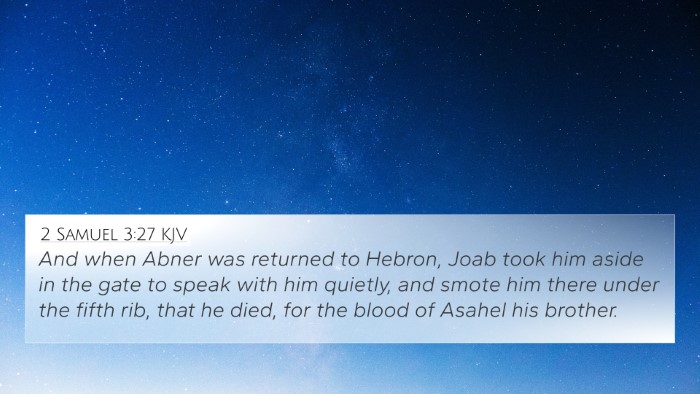Understanding 2 Samuel 3:12
2 Samuel 3:12 states: "And Abner sent messengers to David on his behalf, saying, 'To whom does the land belong? Make your covenant with me, and behold, my hand shall be with you to bring over all Israel to you.'
This verse marks a significant moment in the power dynamics of Israel during the reign of David as it illustrates Abner's attempt to consolidate power and establish an alliance with David. The following insights combine various public domain commentaries to provide a deeper understanding of this passage.
Summary of Insights from Commentators
-
Matthew Henry:
Henry emphasizes the political landscape during this period, highlighting Abner's pivotal role as the commander of Saul's army. His outreach to David represents a shift in allegiance, indicating that Abner recognizes David's legitimacy as king. The act of sending messengers instead of appearing himself shows the delicate nature of this political maneuver.
-
Albert Barnes:
Barnes outlines the implications of Abner's proposal for a covenant. It is a strategic move that implies not just a personal alliance, but a unity of the tribes of Israel under David's rule. The phrase "to whom does the land belong" represents the recognition of David's rightful claim to the throne, highlighting the transition from the rule of Saul.
-
Adam Clarke:
Clarke points out the significance of Abner's conversion. He elaborates on how his gestures signify remorse for his former loyalties and a willingness to promote unity among the tribes by bringing them under David's leadership. Clarke further discusses the spiritual element of this union, suggesting that God's providence is guiding Abner to David.
Thematic Connections
This verse serves as a vital link in the historical narrative of the Israelite monarchy and has several connections to other Biblical texts that underline its significance. Below are notable cross-references:
- 1 Samuel 16:12-13: Where David is anointed king, establishing his rightful place in history.
- 2 Samuel 2:1: David inquires of the Lord about his next steps after Saul's death, signifying his reliance on God.
- 2 Samuel 5:1-5: This later passage shows the culmination of Abner's efforts, where all tribes of Israel come to David to anoint him as king.
- 1 Chronicles 12:23-40: Provides a detailed account of the support David receives, indicating a unifying theme in his leadership.
- Ephesians 4:4-6: Reflects the New Testament understanding of unity amidst diversity, comparable to the tribes coming together under David.
- Romans 13:1: Suggests divine ordination of authority, correlating to how David’s kingship aligns with God’s purpose.
- Psalm 133:1: A declaration on the beauty of unity, paralleling the themes of cooperation found in David and Abner's alliance.
Practical Application
This passage demonstrates the importance of alliances, not just in political realms but also in our spiritual lives. The covenant highlights the role of trust and unity in achieving a common purpose. This is essential for anyone studying the Bible for personal enrichment or sermon preparation.
How to Use Bible Cross-References
Understanding how to find cross-references in the Bible can greatly enhance your studies. Here are some tools and methods:
- Bible Concordance: A Bible concordance can help identify specific keywords and their corresponding verses, aiding in thematic studies.
- Bible Cross-Reference Guide: Utilize guides that offer insights into parallel themes and narratives across scripture.
- Cross-Reference Bible Study: Engage in structured Bible study methods that include various verses that complement the themes present in 2 Samuel 3:12.
Conclusion
2 Samuel 3:12 is not just a historical account but a narrative filled with theological significance. Its study opens the door to understanding broader themes of leadership, loyalty, and divine purpose. Utilizing the principles of cross-referencing can greatly deepen one's scriptural insights and aid in personal faith development.
